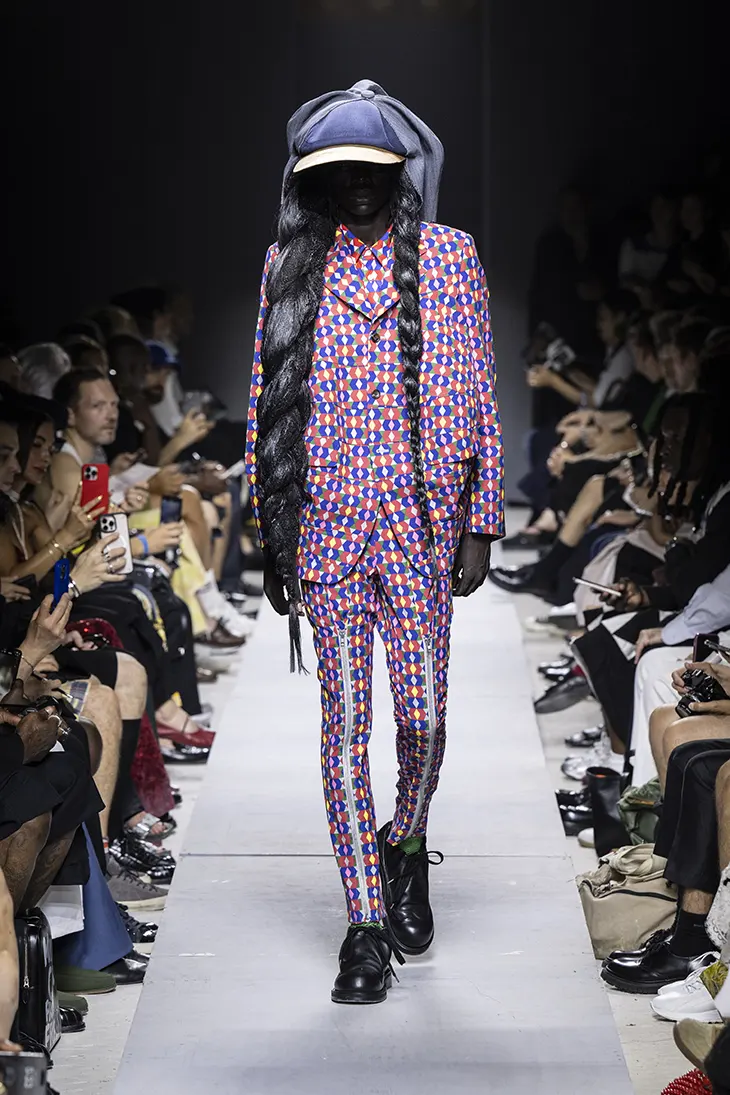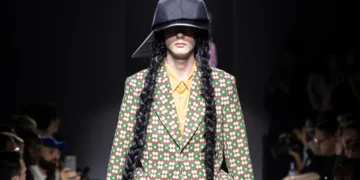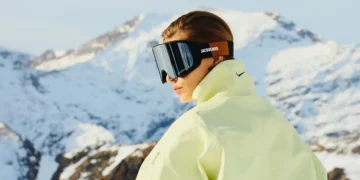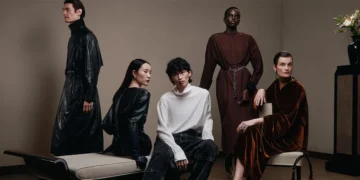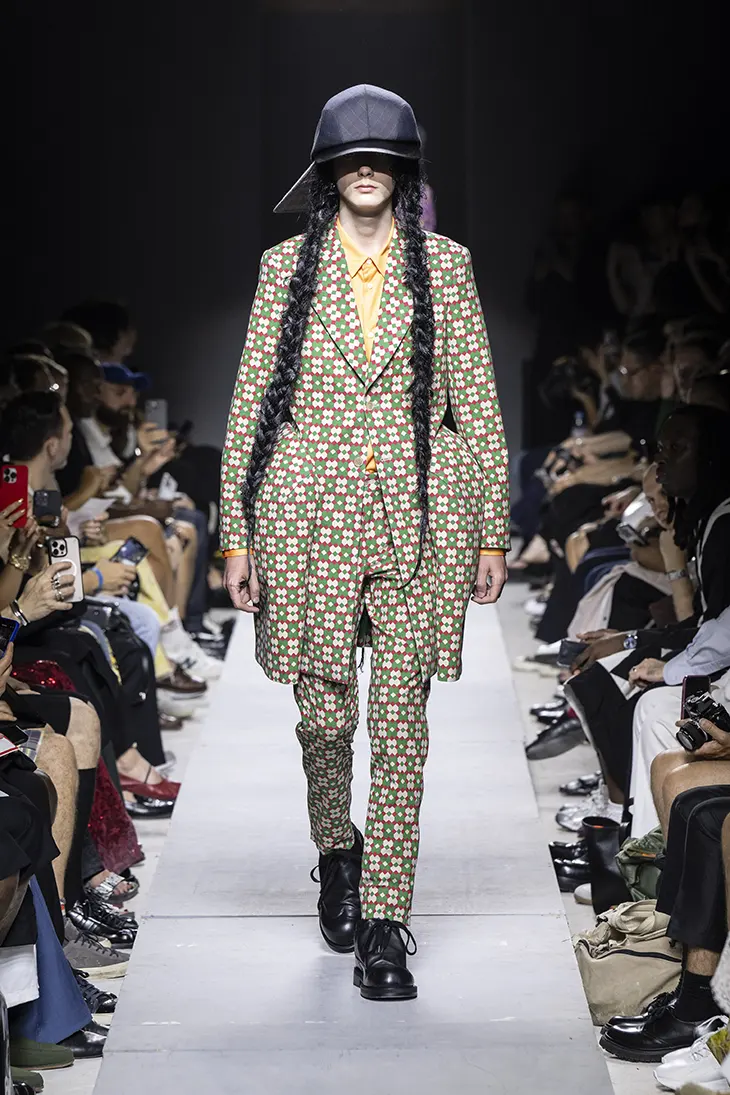
Rei Kawakubo’s Comme des Garçons Homme Plus Spring 2026 collection confronts the idea of the suit by stripping it of convention, then layering it back with warped volume, sculpted gesture, and a dose of quiet absurdity. Presented in a stifling concrete venue in Paris, the show unfolded with friction. “No suits, but suits,” Kawakubo noted, suggesting the silhouettes that followed were less about tailoring in the traditional sense and more about an embodied ritual of dressing.
SPRING SUMMER 2026
This season’s tailoring pulls away from structure as we know it. Optical patterns camouflage bulging shapes around hips, shoulders, and sleeves, where conventional suits would flatten and smooth. These distortions interrupt the eye and challenge the body, suggesting armor, burden, or mutation rather than corporate polish. The use of stiff godets and padded elements evokes tailcoats or ceremonial garb, but subverted, familiar only in the most fleeting ways.
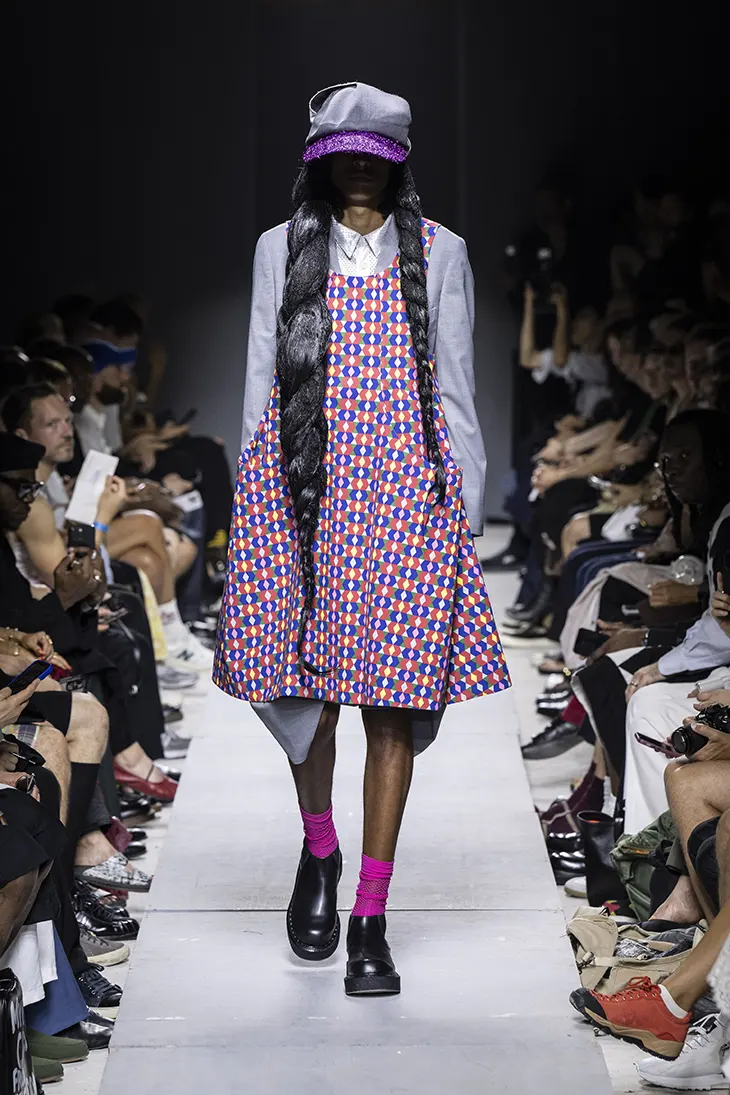
Some ideas cycle back: zippered pants bursting into ruffles, banded construction building soft sculpture into garments, and skirt-like shapes layered over skinny trousers. These recurring signatures now feel ritualistic, Kawakubo isn’t repeating herself, she’s insisting. Each version adds new weight, new angle. There’s evolution through pressure, not progression.
New this season: padded jacket lapels rendered in high contrast. On cropped black tuxedo jackets, white lapels appeared almost cartoonish, an exaggeration of elegance that felt both absurd and oddly elegant.
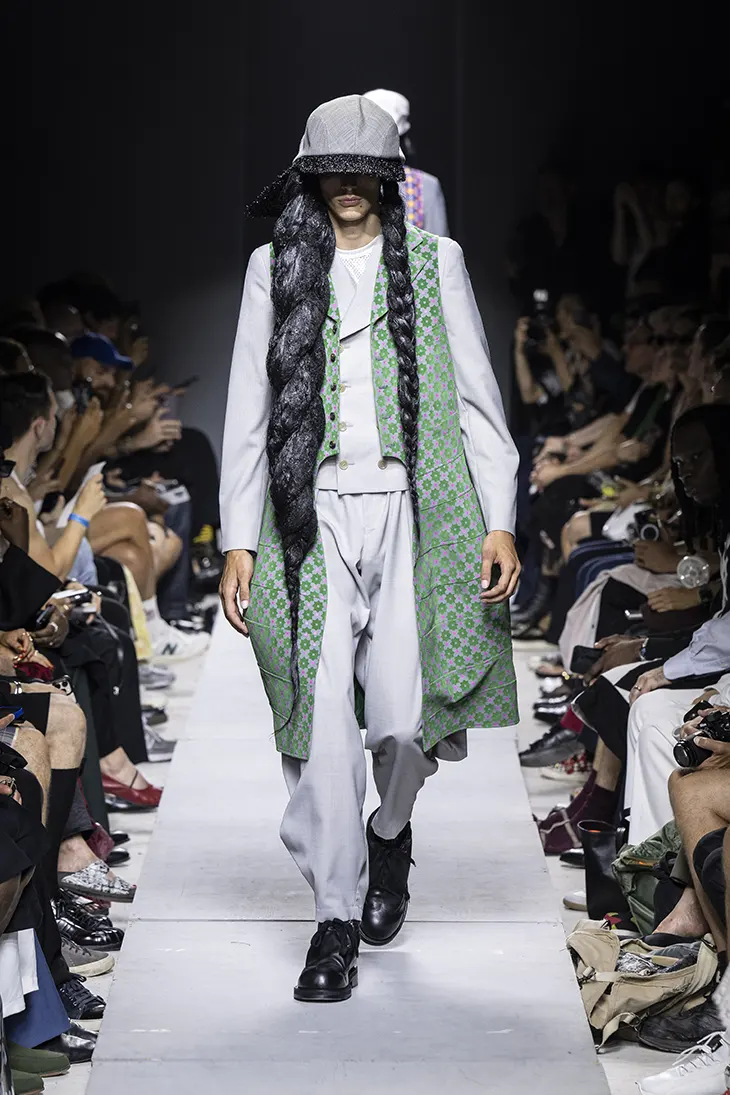
Topping it all off: thick, shoulder-length wigs of jet-black hair and multi-brimmed newsboy caps, unsettling, comedic, uncanny. They added a strange spiritual undertone to the proceedings, as if these models weren’t wearing clothes so much as embodying a cast of eccentric messengers. Kawakubo herself hinted at this energy, stating: “We would really need to get someone powerful like a shaman to come to us to lead us to peace, love and fraternity.”
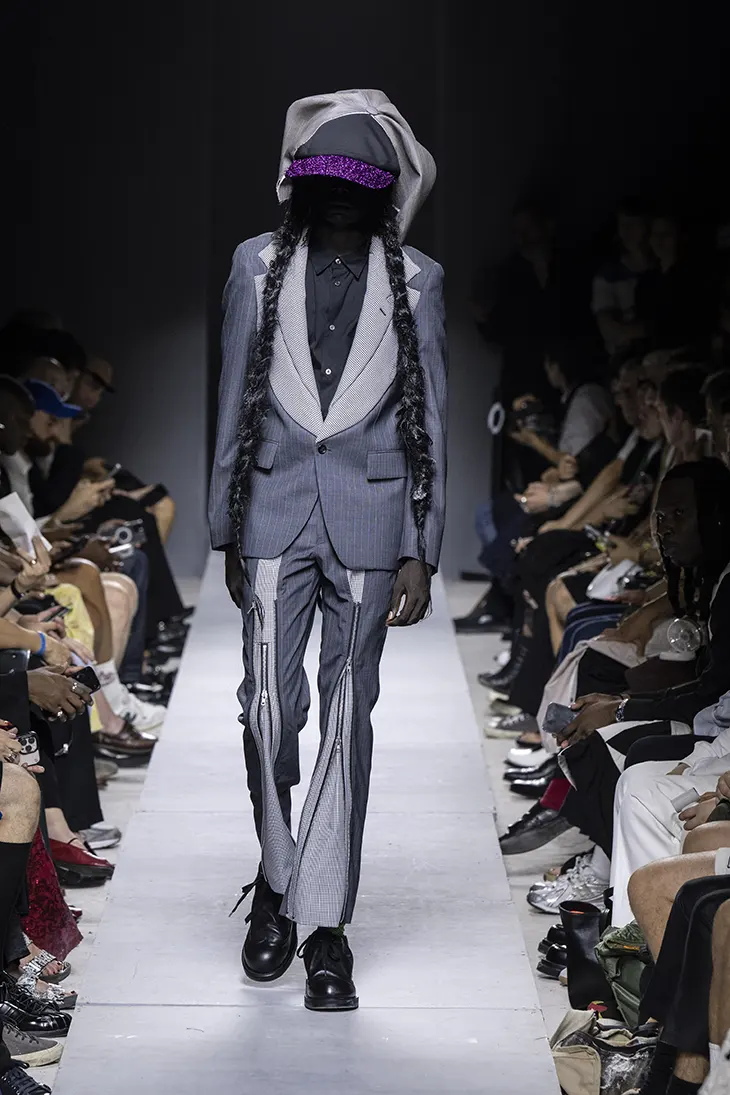
This is a ceremony of tailoring dismantled, a show built on shadow and suggestion. Kawakubo’s “not suits” don’t just reject the boardroom. They reject the idea that fashion must ever sit still.
